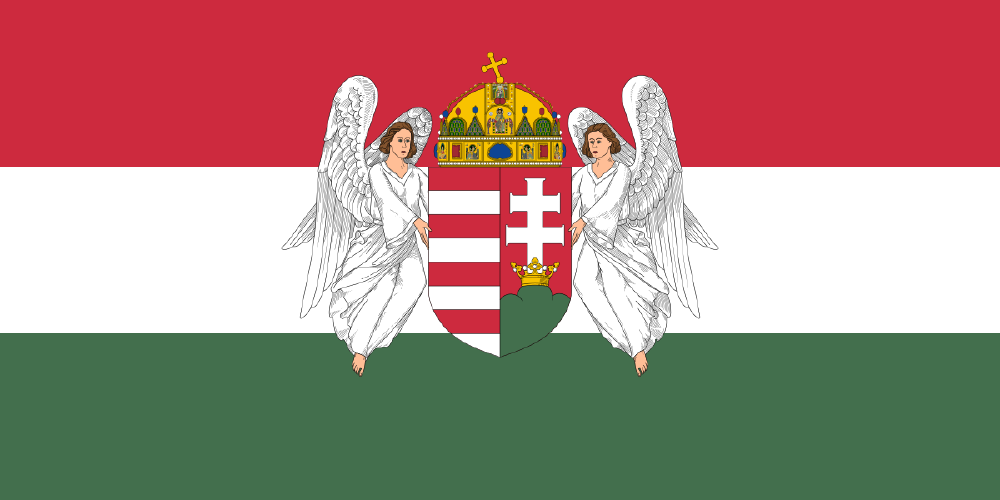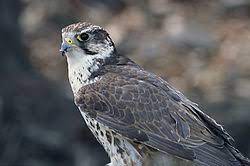| National Factbook |
| Flag: |

|
| Nation Name: |
Kingdom of Hungary |
| Leader Name: |
Horthy |
| Currency: |

Pengő |
| National Animal: |

Turulmadár |
| History: |
The Hungarians, led by Árpád, settled the Carpathian Basin in 895 and established the Principality of Hungary. The Hungarians led several successful incursions to Western Europe, until they were stopped by Otto I, Holy Roman Emperor in the Battle of Lechfeld. The principality was succeeded by the Christian Kingdom of Hungary with the coronation of St Stephen I at Esztergom on Christmas Day 1000. In 1051 armies of the Holy Roman Empire tried to conquer Hungary, but they were defeated at Vértes Mountain. The armies of the Holy Roman Empire continued to suffer defeats; the second-greatest battle was at the town now called Bratislava, in 1052. Before 1052 Peter Orseolo was overthrown by king Samuel Aba of Hungary. In 1241, Hungary was invaded by the Mongols. In 1528 the country was invaded by the Ottomans, and split into 3 kingdoms. After the Ottoman invasion, the country was ruled by the Austrians until the Hungarian revolution in 1848, which resulted in defeat for the Hungarians. In 1868 the Austrian Empire turned into Austria-Hungary, which was then dissolved as a result of WW1. After the harsh Treaty of Trianon, Hungary lost 72% of its territories. During WW2, Hungary allied to Germany, but managed to pull out and switch sides before the Soviets could reach Hungary. The Kingdom of Hungary is one of the few fascist countries left in the world. |
| Geography |
| Continent: |
Europe |
| Land Area: |
83,685.68 sq. km |
| Terrain: |
The Kingdom of Hungary features a diverse and captivating terrain that plays a crucial role in shaping the history, culture, and lifestyle of its people. Hungary, located in the heart of Central Europe, boasts a landscape characterized by a mixture of lowlands, highlands, rivers, and forests.
The Great Hungarian Plain (Alföld) covers much of the eastern and southeastern parts of the kingdom. Often referred to as the "Puszta," it is known for its expansive, grassy plains. This area is traditionally associated with agriculture and livestock farming and is an essential part of Hungary's breadbasket.
The Carpathian Mountains define the northern and northeastern borders of the Kingdom of Hungary and continue to be an iconic geographical feature of modern Hungary. These mountains offer picturesque landscapes, dense forests, and numerous hiking and skiing opportunities.
Transdanubia is a hilly and forested region located to the west of the country. It is characterized by rolling landscapes, vineyards, and fertile soil. This area is home to Hungary's renowned wine regions and features charming historic towns, including the famous city of Pécs.
The Danube River, one of Europe's major rivers, flows through Hungary, dividing the country into two main parts: Buda and Pest, which merge to form the capital city, Budapest. The river offers a scenic waterfront and is an essential waterway for trade and transportation.
Lake Balaton, known as the "Hungarian Sea," is the largest freshwater lake in Central Europe. It is situated in Transdanubia and is a popular destination for tourists and locals alike. The region around the lake features picturesque vineyards, historic towns, and thermal spas.
Caves and Thermal Springs: Hungary is renowned for its numerous caves, with the Aggtelek and Slovak Karst Caves designated as UNESCO World Heritage Sites. Additionally, Hungary is rich in thermal springs, with many cities, including Budapest, having world-famous thermal baths and spas.
Hortobágy National Park, located in the Great Hungarian Plain, is Hungary's first national park and is known for its unique steppe landscape, rich birdlife, and traditional Hungarian shepherding culture.
Overall, the terrain of the Kingdom of Hungary is diverse and provides a wide range of natural resources and recreational opportunities. From the fertile plains of the Great Hungarian Plain to the majestic Carpathian Mountains and the serene beauty of Lake Balaton, Hungary's landscape plays a significant role in its history and continues to captivate those who explore it today. |
| Highest Peak: |
Mt. Gerlach,
2,655 meters
|
| Lowest Valley: |
Lúdvár,
75 meters
|
| Climate: |
The climate in the Kingdom of Hungary is notably diverse, reflecting the country's central European location and varied topography. The Kingdom of Hungary experiences a continental climate with distinct seasonal changes.
Summers in the Hungary are typically warm and sunny, with temperatures often exceeding 30 degrees Celsius (86 degrees Fahrenheit). This season, which extends from June to August, is characterized by long daylight hours and is a popular time for outdoor activities, including visits to the country's picturesque lakes and thermal baths.
Winters in Hungary are cold and can be quite harsh, especially in the northern and mountainous regions. From December to February, temperatures can drop below freezing, and snowfall is common. This season is ideal for winter sports enthusiasts who flock to the Carpathian Mountains for skiing and snowboarding.
Spring and autumn serve as transitional seasons, with milder temperatures and pleasant weather. Spring, from March to May, sees the country coming to life with blooming flowers and green landscapes. Autumn, from September to November, showcases the changing colors of the countryside, making it an excellent time for hiking and exploring Hungary's scenic beauty.
The Kingdom of Hungary experiences a relatively low level of precipitation throughout the year, with most rain falling during the summer months. This dry climate can be ideal for outdoor events and festivals, with numerous celebrations taking place during the warm summer season.
In summary, Hungary's climate is marked by distinct seasons, ranging from warm and sunny summers to cold and snowy winters, with mild and pleasant interludes in between. This climatic diversity complements the country's rich culture, making it an inviting destination year-round. |
| People & Society |
| Population: |
2,897,787 people |
| Demonym: |
Hungarian |
| Demonym Plural: |
Hungarians |
| Ethnic Groups: |
Hungarian - 54.4%
Romanian - 16.4%
Other - 29.2% |
| Languages: |
Hungarian - 54.0%
German - 23.0%
Other - 23.0% |
| Religions: |
Roman Catholicism - 52.0%
Calvinism - 13.0%
Others - 35.0% |
| Health |
| Life Expectancy: |
81 years |
| Obesity: |
3.4% |
| Alcohol Users: |
32.8% |
| Tobacco Users: |
16.3% |
| Cannabis Users: |
0% |
| Hard Drug Users: |
0% |
| Economy |
| Description: |
The economy of the Kingdom of Hungary is characterized by its diverse sectors. Agriculture is a cornerstone of the kingdom's economy, with fertile regions like the Great Hungarian Plain being known as the "breadbasket of Europe." Wheat, corn, and other cereals, along with various crops and livestock, are produced extensively. Trade and Commerce play a crucial role, with cities like Budapest, strategically located on the Danube River, serving as key trade hubs. The manufacturing industry includes machinery, textiles, food processing, and chemical production. Hungary boasts rich mineral resources, including bauxite, coal, and various ores, contributing to a robust mining sector. The forestry industry benefits from the country's extensive forests, with timber production, wood processing, and the pulp and paper industry being vital components. Tourism draws visitors to Hungary, with its natural beauty, historical sites, and thermal baths. The country's energy sector is diversified, with power generation from fossil fuels, nuclear energy, and renewable sources. The service sector, including finance, education, healthcare, and information technology, has grown in importance. Hungary's well-developed transportation networks, including highways, railways, and waterways, facilitate the efficient movement of goods and people, supporting economic activities. The economic landscape of the Kingdom of Hungary is dynamic, combining traditional strengths like agriculture with modern industries and services, all underpinned by its strategic location in Central Europe. |
| Average Yearly Income: |
$160.67 |
| Gross Domestic Product (GDP): |
$11,323,576,319.00 |
| GDP per Capita: |
$3,907.66 |
| Gross National Income (GNI): |
$5,967,245,205.00 |
| Industries: |
The industries of the Kingdom of Hungary exhibit a diverse and evolving landscape. With a mix of traditional sectors and modern manufacturing, Hungary's industrial base plays a vital role in its economy.
Manufacturing is a prominent industry, encompassing machinery production, textiles, food processing, and chemical manufacturing. These sectors benefit from a skilled workforce and well-established supply chains.
The country's mining industry is significant, with rich deposits of minerals like bauxite, coal, and various ores. These resources fuel various downstream industries and contribute to Hungary's economic stability.
Forestry is another essential component, as Hungary's extensive forests support timber production, wood processing, and the pulp and paper industry. Sustainable forestry practices are increasingly emphasized.
Hungary's automotive industry has gained international recognition, with several major manufacturers operating in the country. This sector is a crucial driver of exports and innovation.
Renewable energy production, particularly wind and solar power, is a growing part of Hungary's industrial landscape, reflecting a broader global shift toward cleaner energy sources.
The pharmaceutical and biotechnology industries have seen substantial growth, driven by research and development activities, making Hungary a hub for life sciences. |
| Military |
| History: |
The early origins of the Hungarian Royal Army can be traced to the formation of the medieval Kingdom of Hungary around the year 1000. At this time, it was primarily a feudal army, comprising nobles and their retinues. The army was instrumental in the kingdom's territorial expansion and defense under various rulers, including Stephen I and Matthias Corvinus.
In the 16th and 17th centuries, the Hungarian Royal Army faced significant challenges during the Ottoman-Habsburg wars. Hungary was divided, with the Ottoman Empire controlling parts of the country. Hungarian soldiers played a crucial role in the defense of Habsburg-controlled Hungary against the Ottoman forces. By the late 17th century, the Habsburg monarchy effectively incorporated the Kingdom of Hungary into the Habsburg Empire, leading to the formation of the Austro-Hungarian Army, which served as an integral part of the Habsburg military machine.
The Hungarian Revolution of 1848 sought to establish Hungarian independence and led to the formation of a modern Hungarian army. However, the revolution was suppressed by the Habsburg monarchy. Following the Austro-Hungarian Compromise of 1867, the Kingdom of Hungary gained greater autonomy within the Austro-Hungarian Empire. The Hungarian Royal Army was reestablished as part of the Imperial and Royal Austro-Hungarian Army.
During World War I, the Hungarian Royal Army played a role within the larger Austro-Hungarian Army. The empire's defeat in 1918 marked the dissolution of the Austro-Hungarian Empire.
In the aftermath of World War I, Hungary declared its independence and sought to define its own military. The Hungarian Royal Army was reorganized, downsized, and modernized. During World War II, Hungary aligned itself with Nazi Germany, and the Hungarian Royal Army was involved in various campaigns, including the Eastern Front. As the war progressed, Hungary switched sides to the Allies and regained land lost in the Treaty of Trianon.
After World War II, Hungary was able to maintain its independence and pursue a policy of neutrality. The Hungarian Royal Army was reorganized to reflect the new geopolitical realities of the post-war era. Hungary adopted a stance of non-alignment and neutrality during the Cold War.
Throughout its history, the Hungarian Royal Army experienced numerous transformations, reflecting Hungary's changing political and strategic circumstances. Today, the Hungarian Royal Army continues to serve as the modern armed forces of Hungary. |
| Soldiers: |
55,700 |
| Tanks: |
2,517 |
| Aircraft: |
0 |
| Ships: |
0 |
| Missiles: |
4 |
| Nuclear Weapons: |
0 |
| Last Updated: 12/28/2024 08:10 pm |















